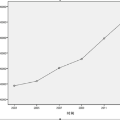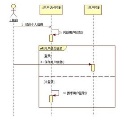
We present a generalized linear structural causal model, coupled with a novel data-adaptive linear regularization, to recover causal directed acyclic graphs (DAGs) from time series. By leveraging a recently developed stochastic monotone Variational Inequality (VI) formulation, we cast the causal discovery problem as a general convex optimization. Furthermore, we develop a non-asymptotic recovery guarantee and quantifiable uncertainty by solving a linear program to establish confidence intervals for a wide range of non-linear monotone link functions. We validate our theoretical results and show the competitive performance of our method via extensive numerical experiments. Most importantly, we demonstrate the effectiveness of our approach in recovering highly interpretable causal DAGs over Sepsis Associated Derangements (SADs) while achieving comparable prediction performance to powerful ``black-box'' models such as XGBoost. Thus, the future adoption of our proposed method to conduct continuous surveillance of high-risk patients by clinicians is much more likely.
翻译:我们提出了一种广义线性结构因果模型,结合一种新颖的数据自适应线性正则化,从时间序列中恢复因果有向无环图(DAG)。通过利用最近开发的随机单调变分不等式(VI)形式,我们将因果发现问题作为一般凸优化来解决。此外,我们通过解决线性规划来建立置信区间,为广泛的非线性单调链接函数确定置信度。我们通过大量的数值实验验证了我们的理论结果,并展示了我们方法的竞争性表现。最重要的是,我们展示了我们的方法在恢复Sepsis Associated Derangements(SADs)上高度可解释的因果DAG方面的有效性,同时实现了与强大的“黑匣子”模型(如XGBoost)相当的预测性能。因此,将来临床医生更有可能采用我们建议的方法对高风险患者进行持续监测。

